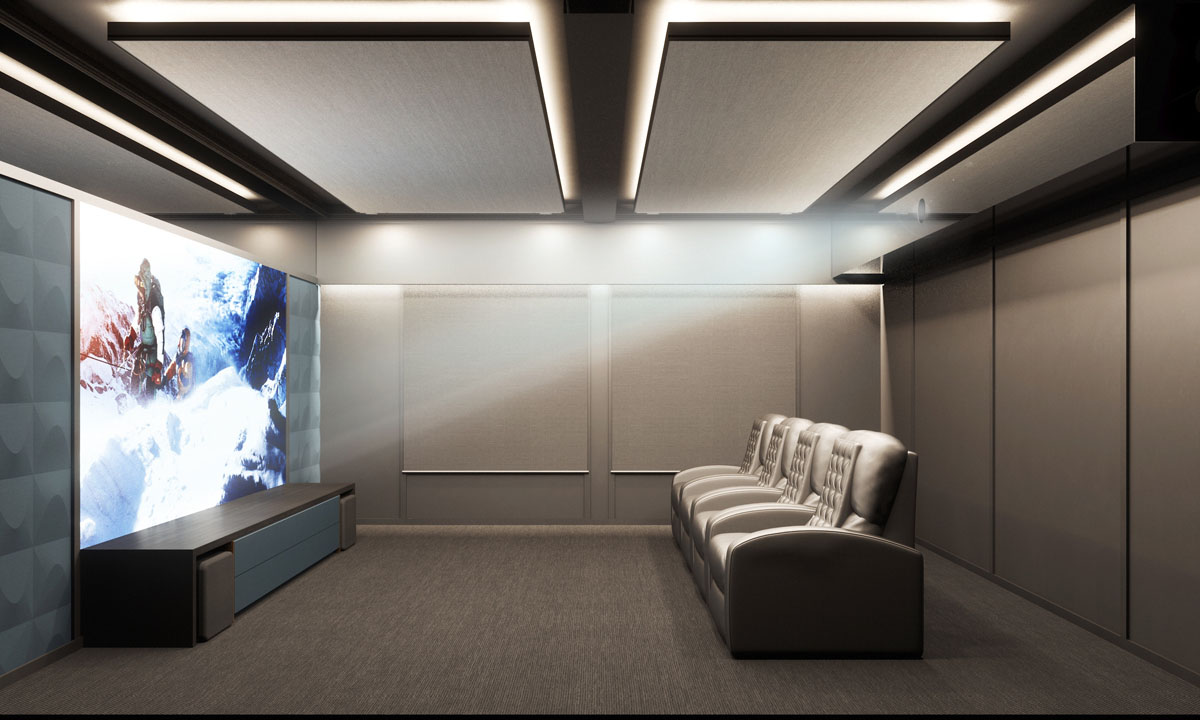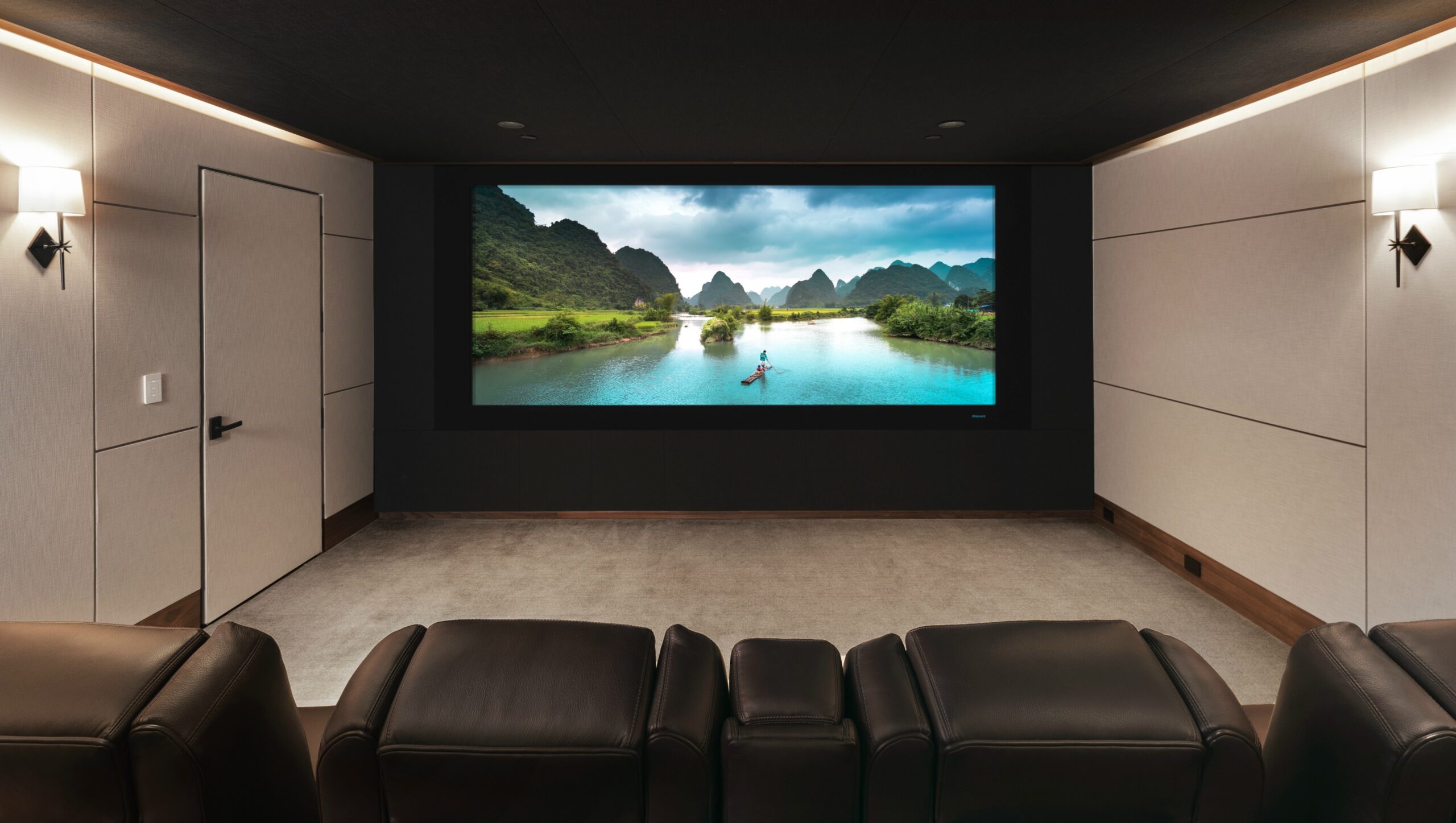Home Theater 101: Every Little Thing You Need to Know for a Cinematic Experience in your home
Creating a home movie theater that rivals the cinematic experience of an industrial theater entails cautious consideration of numerous components, including display choice, audio systems, and room design. Each element plays a crucial duty in attaining the preferred ambiance and functionality. Whether you are considering the optimal display dimension or the complexities of border sound, understanding these basics is necessary. As we explore these crucial components, it ends up being obvious that the options made can considerably influence your total viewing experience, leaving one to consider just how these decisions will form your individual cinema.
Selecting the Right Screen
When establishing a home theater, selecting the ideal screen can make or break the seeing experience - home theater design tampa. The screen acts as the focal point of your setup, influencing picture high quality, seeing angles, and overall visual. Secret variables to take into consideration consist of screen size, type, and resolution
First, establish the suitable screen size based on your room dimensions and seating range. Next, choose in between different screen types, such as fixed-frame, mechanized, or retracting screens, each offering distinctive advantages.
Resolution is one more essential factor. For a truly immersive experience, think about a display designed for 4K or also 8K content, making sure intensity and clarity. Furthermore, take into consideration the screen's gain, which impacts illumination and contrast; a higher gain can improve illumination in well-lit spaces, while a reduced gain might be much more suitable for darker settings.
Choosing Sound Equipment
Audio tools is a vital part of any kind of home movie theater system, significantly enhancing the general viewing experience. The option of audio gear can determine the depth, clarity, and immersion of audio, essential for producing a cinematic environment.
When picking audio equipment, consider a surround sound system, which commonly includes a receiver, numerous audio speakers, and a speaker. A 5.1 or 7.1 channel system is suggested, where the very first number represents the audio speakers and the second the speaker, providing an immersive soundscape. The receiver is the heart of the system, managing audio and video signals, and should sustain modern-day layouts like Dolby Atmos for a boosted spatial experience.
Quality audio speakers are necessary; search for designs that provide a balanced sound profile with good bass reaction. Floor-standing audio speakers can produce richer audio, while shelf alternatives conserve area. Additionally, take into consideration wireless alternatives for ease of installment, although wired systems commonly provide premium performance.

Ideal Seating Arrangements
Creating a perfect home movie theater experience hinges dramatically on optimum seating plans. The setup of seats plays a vital function in both comfort and seeing top quality, straight influencing the overall motion picture experience.
First, take into consideration the display dimension and seeing distance. A typical guideline is to position seats at a distance around 1.5 to 2.5 times the angled dimension of the screen. This guarantees an immersive experience without stressing the eyes.
Following, altitude is important. If your seating is in a tiered format, the back rows ought to be greater than the front to avoid blockages. For flat seating, make sure that the front row is not also near to the display, and that everybody has a clear line of view.
Moreover, take into consideration the arrangement in regards to social characteristics. Group seats can improve the communal experience, while specific seats may be preferred for individual viewing.

Finally, focus on comfort with ergonomic seating that supports prolonged watching periods. Including recliners or cushioned seats can significantly boost the experience, making the home movie theater a favored location for both entertainment and relaxation.
Lighting and Atmosphere
Efficient lights and atmosphere are vital elements of a properly designed home cinema, as they dramatically influence the viewing experience. The best illumination can improve the cinematic feel, while poor selections can diminish it. For optimum outcomes, consider a layered lighting strategy that consists of ambient, job, and accent lights.
Ambient illumination supplies general illumination, making certain that the space is not entirely dark, which can strain the eyes. Dimmer buttons are highly suggested, permitting changes based on the material being seen. Task illumination, such as wall surface sconces or floor lights, offers practical illumination for tasks like reading or browsing the space without interfering with the overall atmosphere.
Accent lighting can be made use of to highlight building attributes or create prime focus, including depth and rate of interest to the space. LED strip lights behind screens or along racks can supply a subtle glow that improves the visual experience without overwhelming the visitor.

Wiring and Installation Tips
A tactical circuitry setup is crucial for attaining have a peek at this site optimum efficiency in your home theater system. Correct electrical wiring not only guarantees high-quality audio and video clip signals however likewise boosts the total visual of your room. Begin by drawing up your design, identifying where each part will certainly be positioned, including your display, audio speakers, and receiver.
When picking cable televisions, focus on top quality, suitably gauged electrical wiring to decrease signal loss. HDMI cables must be utilized for video links, while audio speaker cord ought to match the requirements of your speakers and amplifier. Choose in-wall ranked cable televisions to abide by security standards and keep a tidy look.

Verdict
In recap, creating a phenomenal home movie theater experience calls for mindful consideration of numerous aspects, including screen choice, audio tools, seating plans, lighting, and wiring. Each component plays a critical function in attaining ideal performance and atmosphere, inevitably improving the satisfaction of home amusement. By prioritizing these variables, a cinematic environment can be successfully replicated, permitting for immersive seeing experiences that equal conventional movie theater settings. Interest to information in each area is crucial for overall fulfillment.
Creating a home movie theater that matches the motion picture experience of a commercial theater includes cautious factor to consider of multiple components, consisting of screen selection, sound systems, and space design.When establishing up a home theater, selecting the ideal screen can make or damage the watching experience. Next off, select between various screen types, such as fixed-frame, motorized, or retractable more tips here displays, each offering distinct advantages. For a truly immersive experience, consider a display developed for 4K or even 8K web content, ensuring intensity and quality.In summary, creating a remarkable home cinema experience needs mindful consideration of different elements, consisting of display choice, audio equipment, seating arrangements, lighting, and circuitry.